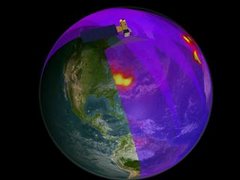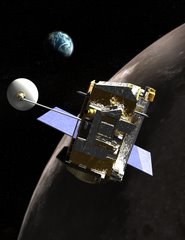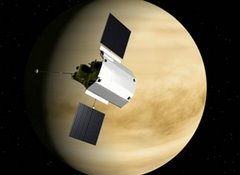Over the weekend, I had the pleasure of attending the Association of Science and Technology Center’s annual conference in Los Angeles, CA. Hosted by the California Science Center, the conference included presentations, keynotes, exhibitors, and visits to local science centers, museums, and other interesting places. I was hoping to be able to blog from the conference but did not have access to wireless internet. So… here are the highlights of the first day of the conference from my perspective. My summaries of the rest of the conference will follow in the days to come.
Friday, Oct. 12, 2007:
I attended the National Educators Outreach Network (NEON) workshop, where I met other informal science educators from across the world, including England and Malaysia, heard presentations on various programs and events, and had discussions about best practices and common issues to overcome. Here are some of the highlights:
Examples of museum education programs:
The Denver Museum of Nature and Science has an education program called "Unraveling Ancient Egypt" in which they use CT scans to examine mummies and make inferences about their lives and culture. For example, people that were wealthy had more complete mummifications (i.e. most brain matter was removed from their skulls, etc.) as compared to less wealthy people. In addition to science, DMNS uses this program to talk about tolerance and respect for the cultures of others in an attempt to help participating students become global citizens. How great is that?? One interesting thing I learned about the DMNS is that they have a program called Teachers on Special Assignment (TOSAs). These teachers help create and review their education programs. What a great way to give teachers a taste of the informal science education field!
The Science Museum in London takes a three-prong approach in many of its youth programs: shows (assemblies), workshops, and museum visits. Many of their education programs use stories. For example, the Three Little Pigs story is used to illustrate the properties of materials (remember hay vs. brick??) for children. They showed us video of museum educators acting out the story and interacting with school children. They all had a blast!!
Many museums, such as the Bishop Museum in Hawaii, are starting to incorporate Science on a Sphere into their exhibits and programs. Every year the Bishop Museum travels to each Hawaiian Island to present educational programs to its school children, many of whom have never left their home island. They take a portable, inflatable dome with them so that the students can see planetarium shows. They're also planning to get a Magic Planet to take with them so that they can share the SoS visualizations with the students. It's great that the Bishop Museum makes it a point to reach as many Hawaiian children as possible each year and to show them cool things they wouldn't get to see otherwise.
Examples of interesting things I learned, good ideas, and best practices from small group discussions:
- Museums often find it harder to market free programs than ones that cost money because people think that if something costs more it's worth more. So don't be afraid to check out free programs and events offered by your local museums!
- Many museums offer coupons for free admission to educators so that they can check out the facilities and educational resources.
- Some museums utilize "on-call" teachers and volunteers for different events. If you're interested in volunteering at a museum but don't have the time to committ to a routine schedule, see if they have a program like this!
- When designing visuals and signage for educational programs, consider utilizing a museum's exhibits department because they understand how different people and different ages learn visually.
- When writing educational materials or exhibit labels, consider using a lexcon calculator. These calculators analyze the difficulty of your text.
- Museum visitors, especially children, can get overstimulated easily at a museum. By addressing their basic needs up front (i.e. letting them know when and where bathroom breaks and lunch will be held), they can let go of these worries and concentrate on the new experiences and information before them. Children also need to know when they'll get to visit the gift shop and what they might find there. (We all have to admit that visiting a gift shop is a highlight of any museum visit, no matter how old we are!!)
- Some museums offer free admission passes that you can check out from your local library and then return them when you're done. What a fabulous idea!
Stay tuned for more tomorrow...
Wednesday, October 17, 2007
Subscribe to:
Comments (Atom)




